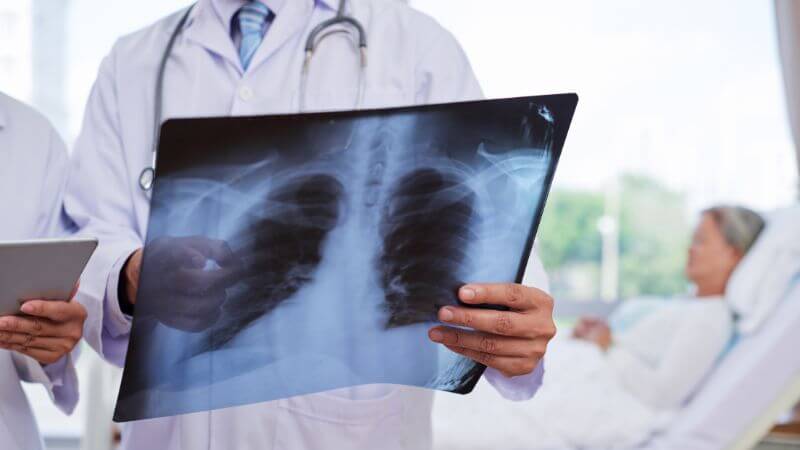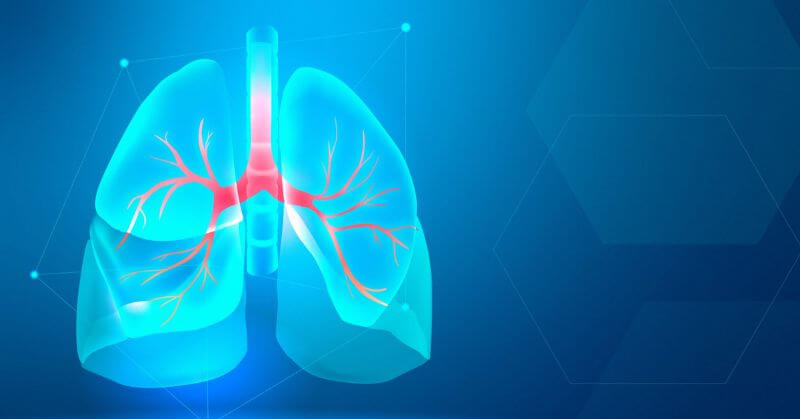Lung function tests, also referred to as pulmonary function tests, are a series of assessments that evaluate how well your lungs are functioning. These tests, often performed alongside other diagnostic tools, can help detect and monitor lung diseases and assess the overall health of your airways. The airways include vital structures like the trachea (windpipe), nose, throat, and bronchial tubes, which deliver air to your lungs. There are various types of lung function tests, each suited for different scenarios.
For people living in Kolkata and other cities in West Bengal, it is highly recommended to consult specialists like Dr Arindam Mukherjee, the best pulmonologist in Kolkata, if they experience any respiratory or lung-related issues. He can recommend the most suitable lung function tests for your needs. Continue reading to learn about the most common tests used to evaluate lung function.
Common Lung Function Tests

There are many different lung function tests, including:
1. Spirometry
This is the most widely used lung function test. Spirometry assesses various aspects of your breathing, including the volume of air you are able to exhale, how much air you can inhale and exhale in one minute, and how much air remains in your lungs after a normal exhale. Here’s what to expect during a spirometry test:
- You’ll sit on a chair and a soft clip will be placed on your nose to make sure you only breathe through your mouth.
- You’ll tightly seal your lips around a mouthpiece connected to a device called a spirometer.
- You’ll be instructed to inhale deeply and then exhale into your mouthpiece as forcefully as possible. The spirometer will record the amount of air you exhale and the speed at which you do so.
- In some cases, you may be given an inhaled medication that opens your airways. You’ll then repeat the test to determine if the medication improves your ability to exhale more air at a faster rate.
2. Lung Volume Test
Also known as body plethysmography, the lung volume test is the most accurate method to measure the total amount of air your lungs can hold and the amount of air remaining after you exhale as much as possible. Here’s how the test is typically conducted:
- You’ll sit in a small, airtight room with clear walls, resembling a telephone booth.
- A soft clip will be placed on your nose to ensure you breathe only through your mouth.
- You’ll seal your lips tightly around a mouthpiece and follow specific breathing instructions.
- Changes in air pressure inside the room will help determine how much air your lungs can hold and the volume of air that remains after exhaling.
In some cases, a lung volume test is conducted by breathing in a special combination of gases for a couple of minutes while wearing a nose clip, without having to sit in an airtight room.
3. Lung Diffusion Capacity Test
Also known as the gas diffusion test, the lung diffusion capacity test assesses how well oxygen and other gases move from the air sacs (alveoli) in your lungs into your bloodstream. This test helps assess the efficiency of gas exchange in your lungs. Here’s what to expect during the test:
- You’ll sit on a chair with a soft clip on your nose to ensure you breathe only through your mouth.
- You’ll place your lips tightly around a mouthpiece connected to a spirometer.
- You’ll be asked to inhale a very small, safe amount of carbon monoxide gas and hold your breath for about 10 seconds.
- After holding your breath, you’ll exhale through the mouthpiece. The spirometer will measure how much carbon dioxide you exhaled, indicating the amount of gas your lungs absorbed and transferred into your blood.
4. Six-minute Walk Test
The test measures how well your lungs function during physical activity. This test evaluates your endurance and how efficiently your lungs supply oxygen to your body while you are active. Here’s how the test is conducted:
- Your blood pressure will be measured, and you’ll be asked to rate any shortness of breath or fatigue you’re experiencing.
- You’ll walk as far as possible within six minutes, usually in a hallway.
- As you walk, your heart rate and the oxygen level in your blood will be monitored.
- After six minutes, your blood pressure will be measured again, and you’ll rate your level of shortness of breath and fatigue.
5. Cardiopulmonary Exercise Test (CPET)

This is another test that assesses how well your heart and lungs function during physical activity. Here’s what to expect during the test:
- You’ll be connected to monitors that measure your breathing, heart rate, blood pressure, and blood oxygen levels while you exercise.
- You’ll breathe through a face mask or mouthpiece connected to a monitor. It tracks how much oxygen you inhale and how much carbon dioxide you exhale.
- Exercise Routine: You’ll exercise on a stationary bicycle or treadmill for 10 to 20 minutes. The intensity of the exercise will gradually increase and then decrease as the test progresses.
Lung function tests are essential tools in evaluating the health and efficiency of your respiratory system. From spirometry to cardiopulmonary exercise tests, each type provides valuable insights into how well your lungs and airways are performing, both at rest and during physical activity. These tests not only help detect and monitor lung conditions but also guide treatment plans tailored to your specific needs. If you experience symptoms like shortness of breath, wheezing, and chronic cough, or if you’re preparing for surgery, consult with a specialist like Dr Arindam Mukherjee, the best pulmonologist in Kolkata, to determine which lung function tests are most appropriate for you.
Follow Us: Facebook | Instagram | X |
Youtube | Pinterest | Google News |
Entertales is on YouTube; click here to subscribe for the latest videos and updates.














